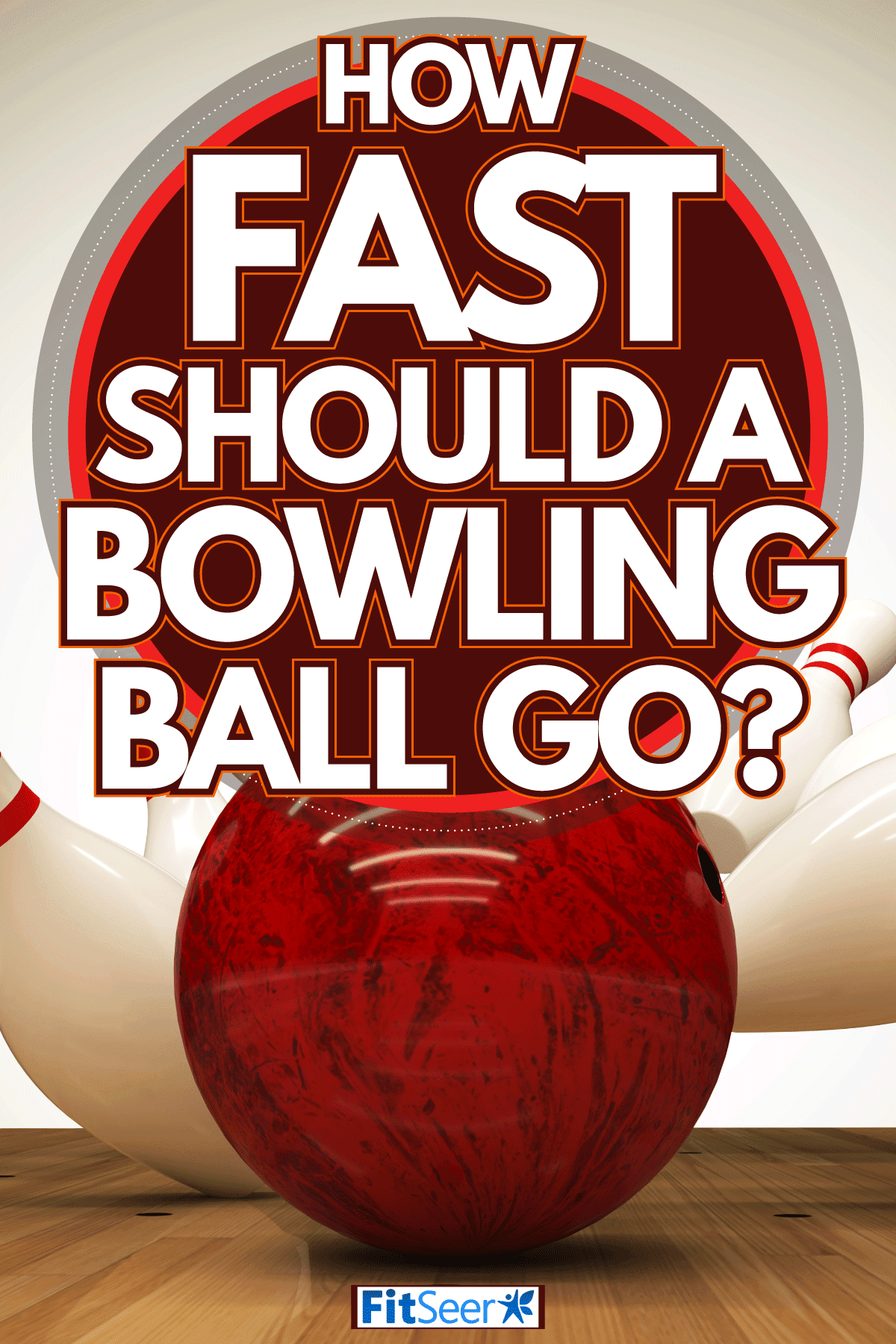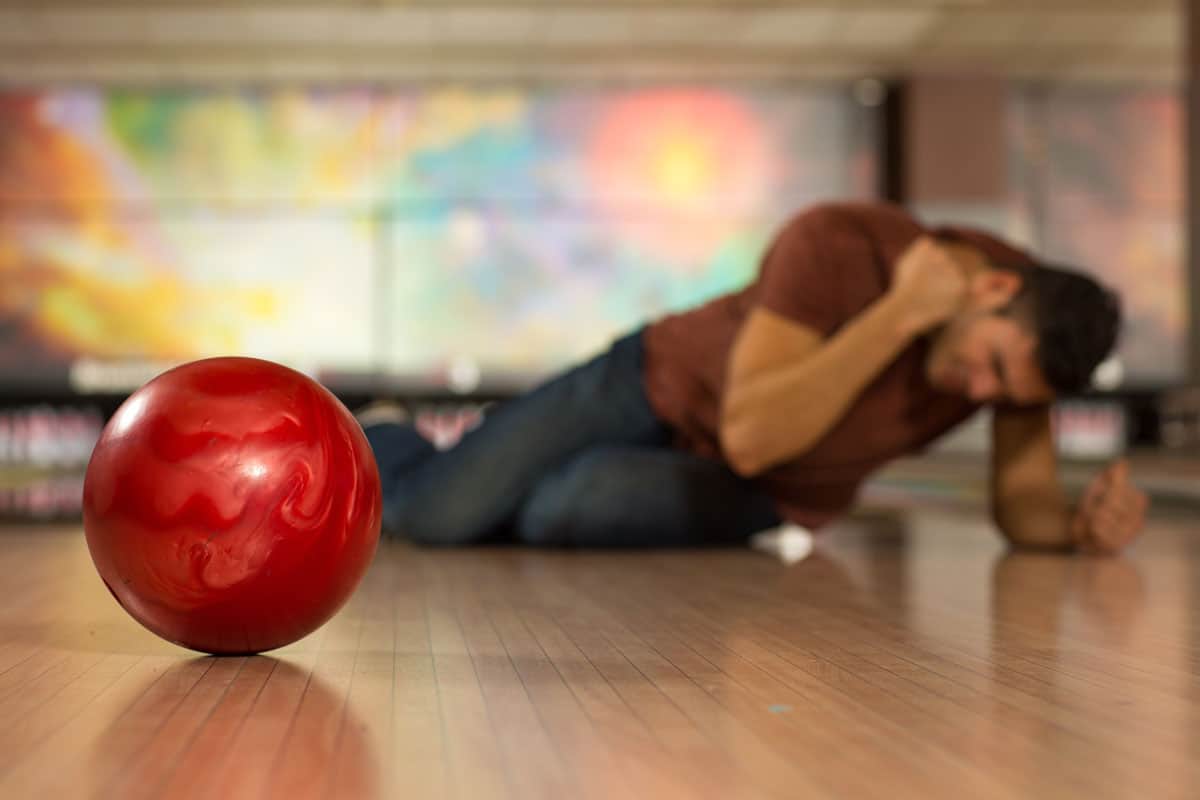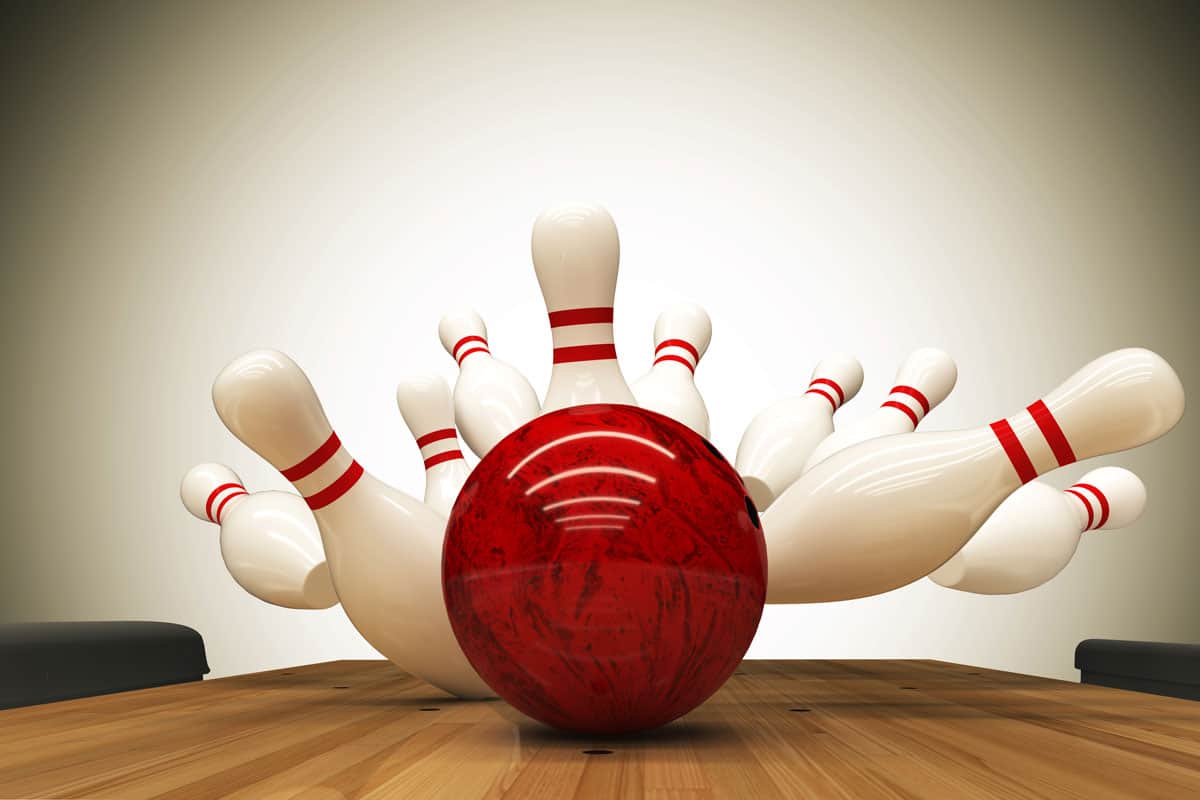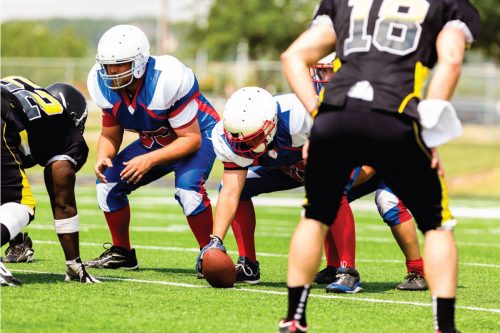In order to increase your bowling score, the more strikes you can get, the better. However, to get more strikes, you need good technique, but you need to throw the ball at the correct speed. The problem is that most people don’t know how fast they should be throwing the ball. So, let's help you out by giving you some guidelines on how fast you should be throwing the ball.
For competitive bowlers, the bowling ball should be going at an average speed of 20-21 miles per hour when it hits the pins. However, the average bowling speed is around 16-17 mph for the average player. Therefore, it is important to get your technique down before trying to throw the ball too hard.
By giving the bowling ball more speed, you can increase your chances of getting a strike. In this article, we will discuss why speed is important to improve your score. In addition, we will answer other frequently asked questions about bowling, so keep reading!

Why Does Bowling Speed Matter?
Bowling is a fun sport enjoyed by people of all ages, but it can be challenging to get that perfect strike. Fortunately, increasing your bowling speed can help you achieve this more often.
When you add speed to your throw, the ball will hook less and have a better chance of going straight down the middle of the lane. This results in more strikes and higher scores.
When you hit the pins with more force, then there will be more pin action. This means that there is a higher chance of the pins hitting other pins and falling down. The more pin action, the better your chances of getting a strike.
You will find that competitive bowlers strive to hit the pins with as much force as possible. This is because they know that it will result in more strikes and a higher score. So, typically, you will see them throwing the ball at 20-21 mph.
The sweet spot seems to be around 16-17 mph for average recreational bowlers. This is fast enough to get good pin action but not so fast that it’s difficult to control your throw.
Of course, everyone is different, and you may need to experiment with different speeds to find what works best for you. The important thing is to focus on your technique and not worry about how fast you’re throwing the ball.
Once you have that down, you can start increasing your speed and strive for that perfect strike.

Should You Use A Lighter Or Heavier Bowling Ball?
Since speed is important for more pin action, you may be thinking that using lighter balls is the way to go. After all, it’s easier to throw a lighter ball faster, right?
Not necessarily. While you may be able to throw a lighter ball faster, it won’t have as much power behind it when it hits the pins. Unfortunately, this means that you may not get as many strikes as you’d like.
On the other hand, a heavier ball will have more power behind it and is more likely to result in strikes. Of course, it’s not as easy to throw a heavy ball as fast as a light one. But with practice, you should be able to find a weight that you can control without too much difficulty.
This is why you will see most professional bowlers using a 16-pound bowling ball. One, the heavier ball has the power needed to get more strikes. Two, they have the strength and technique to control the ball at high speeds.
What Is The Ideal Bowling Ball Weight?
The ideal weight of a bowling ball depends on your weight and strength. A good rule of thumb is to choose a ball that is 10% of your body weight.
For example, if you weigh 150 pounds, then a 15-pound ball would be a good choice. If you’re closer to 200 pounds, then you could go up to a 16-pound ball because that is the maximum bowling ball weight.
Of course, this is just a general guideline. You may find that you can control a heavier or lighter ball than 10% of your body weight. The important thing is choosing a ball that you feel comfortable throwing and that allows you to control your speed and technique.

How Do You Increase Your Bowling Speed?
Now that we’ve discussed why bowling speed matters, it’s time to discuss how you can increase your bowling speed. Here are a few tips:
Increase Step Pace
One way to increase your bowling speed is to increase your pace after each step. This will help you build momentum and carry it through your throw. Just be sure not to hurry your steps, as this can affect your accuracy.
Use Your Legs
When you throw the ball, be sure to use your legs to generate power. Your arms alone won’t be able to generate enough speed. So as you take your first step, push off with your back leg and transfer that energy to your front leg. This will help you get more power behind your throw.
Swing Back Faster
Bringing the ball back faster will also increase your bowling speed. In addition, by doing so, you will increase the momentum of the ball before you release it.
You can practice this by swinging your arm back and forth without releasing the ball. Then, once you get a feel for the right speed, you can start incorporating it into your real throw.

Hold Your Form After Releasing the Ball
Once you release the ball, it’s important to maintain your form. This will help you keep your speed and accuracy. If you start to relax too soon, you may lose some of that speed and power.
Exercise
You can increase your bowling speed by exercising. By working on your strength and coordination, you’ll be better able to generate power when throwing the ball. This is especially important for your legs, as they are responsible for much of the power behind your throw.
Practice
As with anything, practice makes perfect. The more you bowl, the better you’ll become at throwing the ball fast and accurately. So get out there and start practicing!
Get Coaching
If you’re serious about increasing your bowling speed, then you may want to consider getting coaching. A good coach can help you correct any technical issues and give you personalized tips on how to improve your game.
They will also help you find a bowling ball that fits your style and build. This is important, as using the wrong ball can negatively affect your speed and accuracy.
Use The Right Equipment
If you want to bowl fast, then you need to use the right equipment. This includes choosing a bowling ball that is the right weight for you. It should also be made of quality materials that won’t slow you down.
You also need to make sure you have the right shoes. For example, bowling shoes have a special sliding sole that helps you generate speed when throwing the ball.
If you’re using rented shoes, then be sure to check the sole to see if it’s in good condition. You may also want to invest in your own pair of bowling shoes.
Can You Throw A Bowling Ball Too Hard?
Yes, you can throw a bowling ball too hard. If you throw the ball too hard, you may lose control of it, and your accuracy will suffer.
You may also find that the ball doesn’t have as much power behind it when it hits the pins, which can result in fewer strikes. Instead, avoid "muscling" the ball with your upper body and instead let your legs do the work.

In addition, if your arm is getting sore from throwing the ball too hard, you may want to take a break. Again, it’s important to listen to your body and take breaks when you need them.
If you’re just starting out, it’s best to start with a lighter ball and work your way up to a heavier one. This will help you get a feel for the ball and how hard you need to throw it. Then, as you get more experienced, you’ll be better able to control a heavier ball.
Final Thoughts

Overall, you need to find the right mixture of bowling ball weight, equipment, and technique if you want to bowl fast. However, by following the tips in this article, you’ll be well on your way to bowling faster and more accurately. Just remember to practice and have fun!
Made it to the end? Here are other articles on bowling you might like:
5 Types Of Bowling Balls For Different Lane Conditions
How Much Does It Cost To Go Bowling? [And Should You Buy Your Own Gear]
How Long Does A Reactive Resin Bowling Ball Last? (Compared To Urethane)


![Read more about the article Can Football Players Wear Jewelry? [That Depends!]](https://fitseer.com/wp-content/uploads/2020/10/football-players-on-the-scrimmage-line-Can-Football-Players-Wear-Jewelry-500x333.jpg)


![Read more about the article How Cold Can A Bowling Ball Get [Will It Crack?]](https://fitseer.com/wp-content/uploads/2022/04/A-blue-bowling-ball-left-on-the-alley-500x333.jpg)
